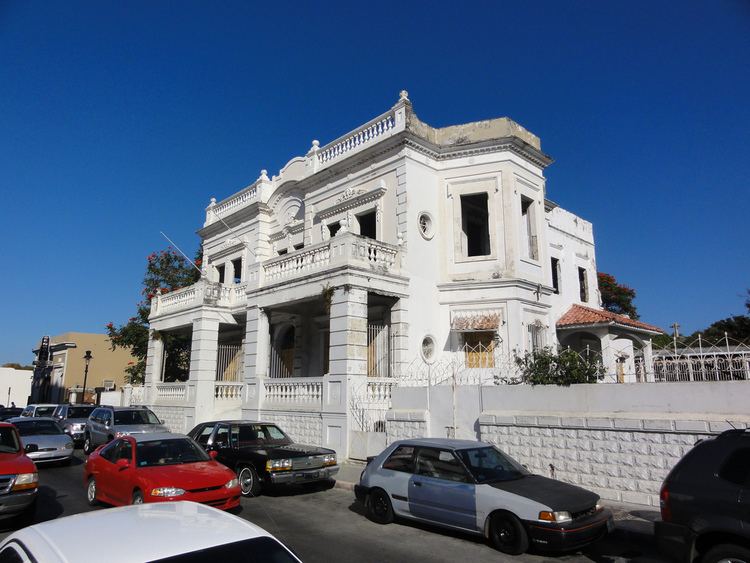Country Puerto Rico Engineer Eduardo Salich | Completed 1911 Opened 1911 Construction started 1911 | |
 | ||
Size 20 ft (6.1 m) high, 18 ft (5.5 m) wide, 12 ft (3.7 m) deep Address 130-144 Calle Villa, Ponce, 00730, Puerto Rico Similar Residencia Ermelindo Salazar, Residencia Subirá, Antiguo Hospital Militar Es, Monumento a los heroes d, Fernando Luis Toro Casa | ||
The Centro Español de Ponce is a historic structure located in Ponce, Puerto Rico, dating to the early twentieth century and which served as the last headquarters of the Centro Español de Ponce, a Spanish heritage club. The structure is prominent among other Neoclassical architecture in Ponce because it is the first structure in Ponce built in that architectural style for use as a residence but then subsequently used as the headquarters of a prominent community-based civic organization, the Centro Español de Ponce club.
Contents
Location
The structure is located in Ponce, Puerto Rico, on the northwest corner of Villa and Mendez Vigo streets. In its heyday, it boasted a luxurious ballroom, a library, a games room and a reading room.
History
The house was designed in 1911 by Ponce architect Eduardo Salich. It was built for Don Fernando Miguel Toro Basanta and his wife Doña Adela Cortada Torruella. The family occupied the house for several generations. On 17 November 1961, the building became the headquarters for the Centro Español de Ponce, a prominent civic organization working for the preservation of Spanish heritage in the city. Many distinguished Ponce citizens have been associated with Centro Español. Ponce architect Francisco Porrata Doria (1890–1971) once presided over the club headquartered at the structure on Villa and Mendez Vigo streets.
Centro Español club
The Centro Español de Ponce club was founded on 14 October 1906. Its founders were a group of Spanish residents of the city of Ponce. Most prominent among its founders were Francisco Oliver Culvelje, Bartolome Arbona, Jacinto Arbona, and Pedro Gispert, but the total group of founders included some 20 other local Spanish residents. The purpose of the organization was to preserve the Spanish heritage in Ponce. The first meeting place was at Number 10 on what is now the perimeter of Plaza Las Delicias. The club’s first board of directors included such prominent Ponce residents as Bernardo Valdecilla, Pedro Juan Bonnin, Manuel Gandara, Antonio Vicens, Francisco Font, and Bartolome Melia.
Events
One of the best documented events accomplished by the Centro Español club was the transfer of the remains of Don Rafael Martínez Illescas, a Spanish army commander who had died in the Spanish–American War during the Puerto Rico Campaign, from a Ponce cemetery to his hometown in Cartagena, Spain, on 20 May 1915. Another well-documented event is one that occurred in 1935 when the Centro Español de Ponce club hosted Argentina’s king of Tango, Carlos Gardel. Contrary to popular belief, though, the Centro Español club did not host Gardel at the Centro Español de Ponce building on Calle Villa, but at the Casino de Ponce, since at that time (1935) the Centro Español de Ponce organization did not yet own or rent the structure on calle Villa. The club purchased the structure on calle Villa on 17 November 1961.
Subsequent tenants
Sometime after 1970 the building became the Ponce regional office for the Fondo del Seguro del Estado (FSE), the government of Puerto Rico’s pension and health plan agency, until FSE opened new offices on Avenida Santiago de los Caballeros in 1985. In 1985, the building became the headquarters for the Sociedad Historica de Ponce (Ponce Historical Society) which occupied it until 1989. It has not been occupied since and as of 2012 it was in ruins.
